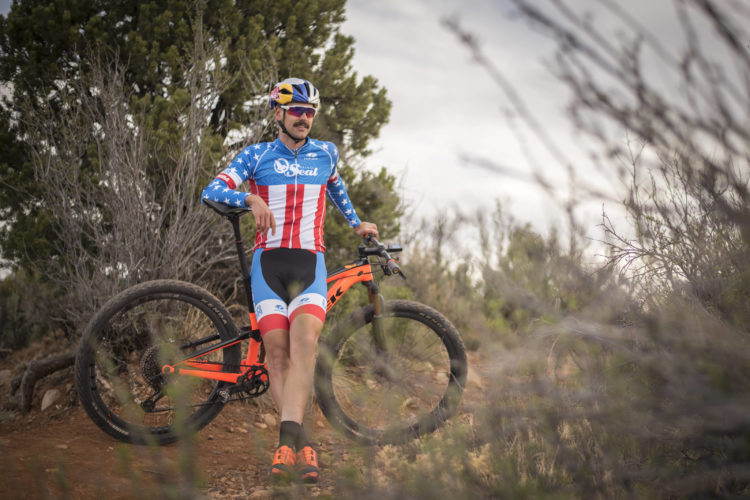
In part one of this series, we outlined an insightful chat with Susie Parker Simmons, high performance director and senior sport dietitian of the United States Olympic & Paralympic Center in Colorado Springs, Colorado.
To summarize:
- Recovery drinks should be taken within 30 minutes of your workout.
- “Your workout” means your last hard effort, and does not include cool down, or a casual ride back to your starting point.
- After a session where you turned yourself inside out, you should shoot for 25 grams of protein, and 1 gram of carbohydrate per kilo of bodyweight, with the carbs coming from both simple and complex sources.
- For less intense workouts, shoot for 15 grams of protein, and 30 grams of carbohydrate, also from simple and complex sources.
- In all cases, fat content in a recovery drink slows absorption and hampers its intended effect. Fat should be avoided.
Using the information above, I searched online for commercially available recovery drinks that were a match. My research revealed five drinks which are popular with the cycling community, six including fat-free chocolate milk. We contacted representatives from the five brands, and two declined involvement after learning the criteria that their products were going to be judged against.
For the sake of simplicity:
- All have various other compounds / elements that aid recovery. We’re just looking at the macronutrients of carbs and proteins here.
- We are defining a “serving size” by Susie Parker Simmon’s definition of 1 gram per pound of bodyweight, assuming a weight of 150 pounds for our athlete. We are listing the proteins associated with the dosage that the theoretical 150-pound (or 68 kilogram) athlete would be receiving.
- Servings per container and cost per container are calculated on the basis of a serving having 68 grams, or 1 gram per kilogram of body weight, for a theoretical 150 pound athlete.
Here are the results.
Fluid: Recovery

- Cost per container: $31.95
- Servings per container: 7.05 (based on a theoretical 150-pound athlete)
- Grams of protein per serving: 22.69
- Cost per serving: $4.53 (find online)
I like that Fluid rocks five flavors of their recovery product: cinnamon vanilla, chocolate, mint chocolate, mixed berry, and tropical fruit. In our first article, Susie Parker Simmons stressed the importance of liking your recovery drink. With five flavors, you have options.
Per Parker, your recovery drink should also have a mix of simple and complex carbs, and Fluid hits that mark.
Of the recovery drinks in this test, Fluid comes the closest to hitting the protein mark.
Flavor wise, I choose the chocolate. Chocolate is my crack. Fluid’s chocolate is super pleasant, with a small taste of bitterness from whey protein.
Proven 4 Sports: Recovery

- Cost per container: $43.99
- Servings per container: 10.05 (based on a theoretical 150-pound athlete)
- Grams of protein per serving: 0 (with caveat)
- Cost per serving: $4.37 (available at Amazon.com)
Of the three recovery drinks, Proven 4 Sports is the only one that submits to NSF for third party, independent testing. Proven 4 Sports is also “Certified for Sports” by NSF, which means that it is tested for approximately 270+ substances banned by major athletic organizations.
As a retired product developer, I am all about third party, independent testing. Virtually every category of product that you touch is subjected to testing at some point in the development or production cycle, except supplements. If you haven’t heard of Proven 4 Sports, it is no surprise. Their major channels of distribution are Major League Baseball teams, National Basketball League teams, and each organization’s coaches, athletes, and trainers. Their brand really took off when MLB got wise to athletes taking Adderall. It turns out that Proven 4 Sports Pre-Game Formula provides athletes with a similar buzz and focus of prescription meds, without violating doping rules.
Note that Proven 4 Sport’s Recovery drink does not have protein in it. It does, however, have branched-chain amino acids, or BCAA. Amino acids are the building blocks of protein. However, because their molecular weight is different, you can’t do a matchie matchie gram equivalent. BCAA’s are unique because your body does not produce them in any meaningful quantity. Research on their effectiveness for recovery is still inconclusive. It appears that exercise duration, and intensity, skew results widely.
Proven 4 Sports Recovery comes in two flavors: lemon lime and raspberry. Both have a light, refreshing taste, perfect for hot days, and / or high altitudes, when your appetite is suffering.
Tailwind: Rebuild Recovery

- Cost per container: $38.99
- Servings per container: 9.48 (based on a theoretical 150-pound athlete)
- Grams of protein per serving: 11
- Cost per serving: $4.11 (compare online)
Tailwind became a go-to for me, based on taste alone. It has a rich, creamy flavor – almost like ice cream – if your imagination is really vivid.
After a particularly grueling training session, when I wanted to destroy a pint of ice cream, two scoops of Tailwind chocolate killed that urge and kept my diet clean.
If I was in a cycle where I had back-to-back hard workout days, or was consistently racing, Tailwind’s lower protein may have not provided the optimal environment for recovery. However, I don’t have any hard metrics to prove, or disprove that. On taste alone, Tailwind was my favorite.
Like Proven 4 Sports, Tailwind is also independent, third party certified by Informed Choice. This ensures that what is on the label, is what is in the package. Like Proven 4 Sports, Tailwind also provided BCAAs.
In addition to their stellar chocolate, Rebuild Recovery also comes in vanilla, which I have not sampled precisely because it is vanilla.
1% Chocolate Milk
- Cost per container: $1.79 at Walmart
- Servings per container: 3.65 (based on a theoretical 150-pound athlete)
- Grams of protein per serving: 21.9
- Cost per serving: $0.49
Much has been written about chocolate milk as a recovery drink. It stacks up quite nicely and is inexpensive.
The caveat is that in a serving for our theoretical 150-pound athlete, 1% chocolate milk rocks 5.5 grams of fat. I am all about fat, but if we follow the guidance on no fats in recovery drinks, you will likely see a reduced rate of assimilation.
Regardless, if you are in rural America, and stop at a gas station where your choice is a stale Nutty Buddy, rotisserie dog, or 1% chocolate milk — go chocolate milk.
Why didn’t we cover fat-free chocolate milk? After not being able to find it on several supermarket and C-store shelves, I called a few distributors. Apparently, fat-free chocolate milk is produced for a few institutional customers, but is rarely found at retail. That being said, if you can find it, it might be a very viable option. The only downside is portability, as compared to H2O and a powder mix.
In a taste comparison, I can’t say that 1% chocolate milk has a taste that is to die for, compared to the powders.
Analysis
You may have noticed that no recovery drinks here hit the 25 grams of protein requirement for our theoretical 150 pound athlete. In discussing with one brand, and one lab that actually produces these products, it comes down to perceived value.
According to the brands we spoke with, recovery drinks are very much an afterthought for most people. Their position is that recreational athletes will spend the money on an energy drink, but not a recovery drink. This also echoes advancements in training, gear, and nutrition – the public believes what it wants to believe, regardless of the science.
When introducing a new product to the market, you have to be sure that the market is ready for the concept, which may blow old paradigms away. By adding in significant protein to a recovery drink, it raises the price point to a level that is not accepted by the public. The vast majority of cyclists receive their info via popular media, or cycling consumer media, without ever doing the hard work of reading peer-reviewed, scientific journals. The public believes what it wants to believe.
So what are you to do? In this two-part series we outlined the macro-nutrients that elite athletes are fed, post-workout. You now have the baseline methodology to choose the right recovery drink for your weight and commitment level.





















7 Comments
Oct 12, 2019
2nd: IPA. Enjoy it.
How does this stack up?
Oct 10, 2019
Oct 7, 2019
Oct 7, 2019
I've been: 1. Mixing Tailwind with 20g of protein, or 2. Taking Fluid straight up, or 3. If I don't want chocolate, taking Proven 4 Sports. BTW.... Proven 4 Sports energy drink is just rocket fuel for me.
Enjoy.
Oct 8, 2019
Oct 7, 2019
Oct 7, 2019
If you do conduct a bit of research, be sure to look into third party verification.
Would love to know what you find out.